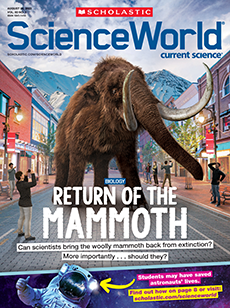IT TURNS OUT A CROW CAN HOLD A SERIOUS GRUDGE. If you annoy one, it won’t forget your face anytime soon. The next time you cross paths, it’ll squawk angrily. That’s the crow’s way of saying, “I know you, and I don’t like you. Get lost!”
In the mid-2000s, wildlife ecologist John Marzluff of the University of Washington was studying how the growth of towns and cities affects crows, and how crow populations affect other birds. As part of his research, Marzluff and his students captured crows, put identification bands on their legs, and then released them. As the team worked, Marzluff noticed that nearby crows watched him closely—and they didn’t like seeing friends and mates get caught.
Crows are intelligent animals. They can solve puzzles, use tools, and have excellent memories—as Marzluff would come to find out. He was curious about the birds’ reaction to members of their flock being trapped and released by his team. That led to a nearly two-decade-long investigation into how well crows recognize people.
A CROW CAN HOLD A SERIOUS GRUDGE. Annoy one, and it won’t forget your face anytime soon. The next time you cross paths, it’ll squawk angrily. That means “I know you, and I don’t like you. Get lost!”
In the mid-2000s, John Marzluff was studying crows. Marzluff is a wildlife ecologist at the University of Washington. He examined how the growth of towns and cities affects crows, and how crow populations affect other birds. For his research, Marzluff and his students captured crows. They put identification bands on their legs and then released them. As Marzluff’s team worked, nearby crows watched closely. Their friends and mates were getting caught, and the crows didn’t like it.
Crows are intelligent animals. They can solve puzzles and use tools. They also have excellent memories, as Marzluff would find out. He saw the birds’ reaction when his team trapped and released members of their flock. Marzluff was curious. How well did crows recognize people? So he began an investigation. It lasted nearly two decades.
